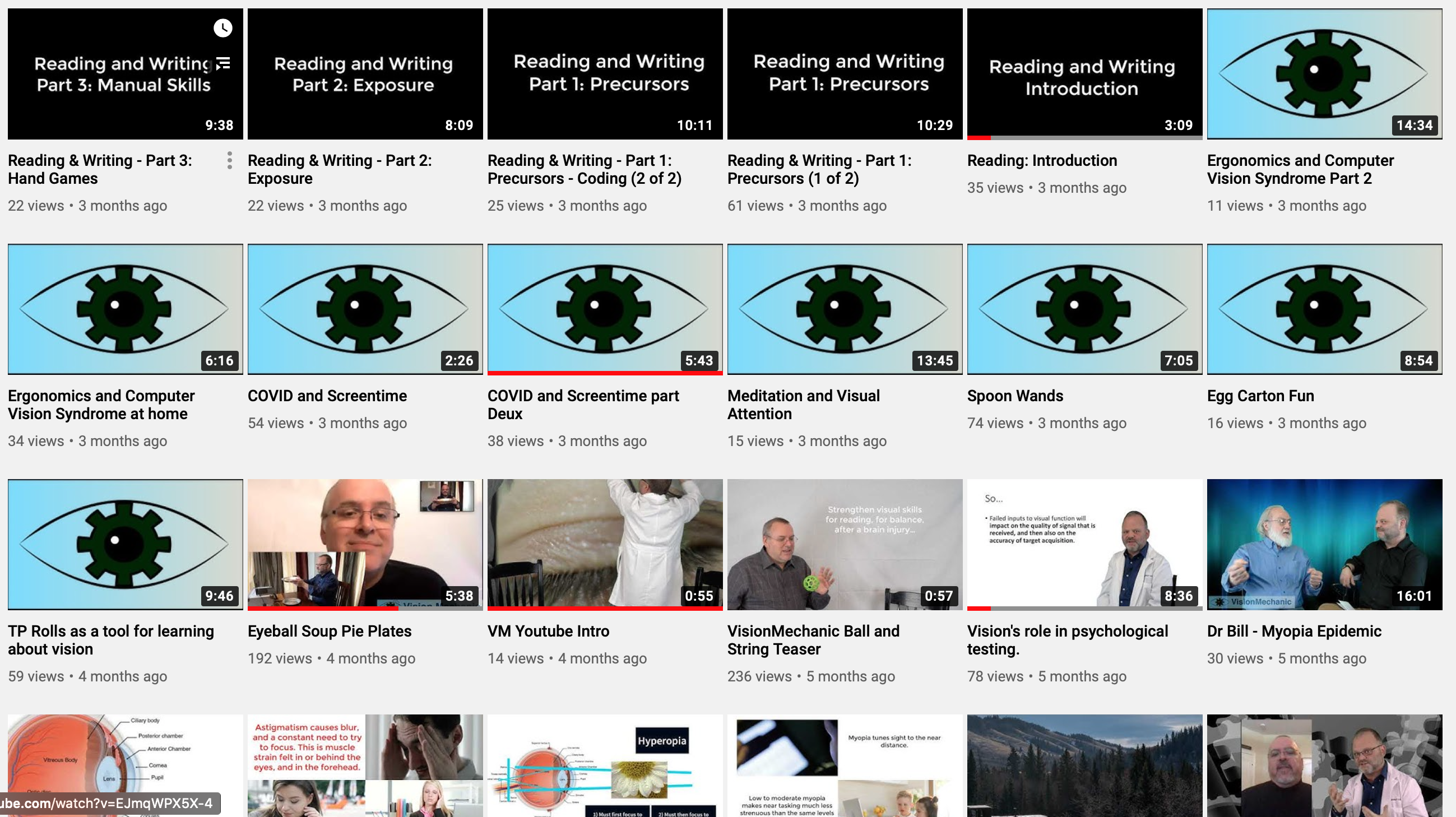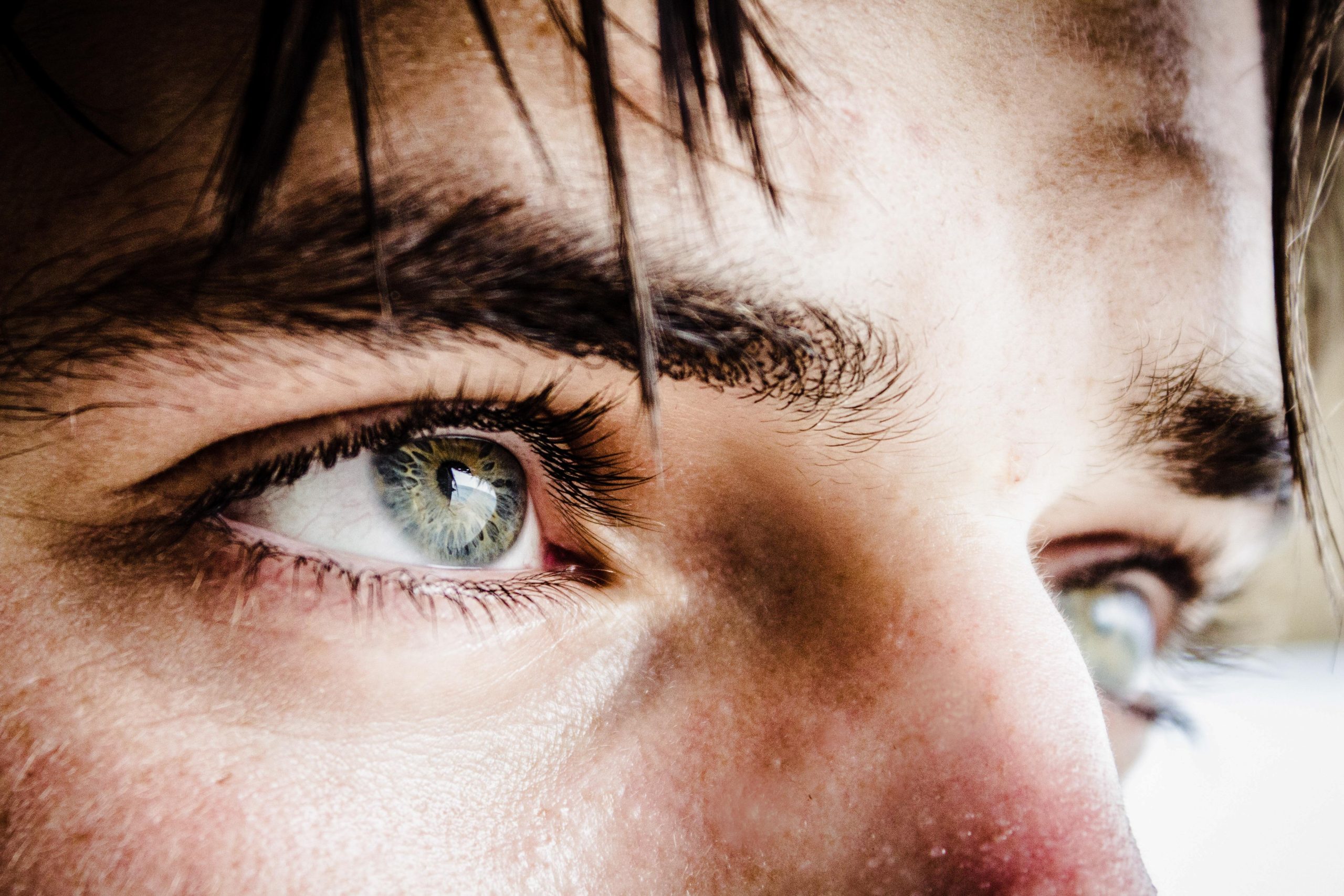 Subscribe to Vision Mechanic on YouTube.com
Subscribe to Vision Mechanic on YouTube.com
(The goal of VisionMechanic.net is to provide science-based clinically relevant resources about humans, for humans. All humans. This series highlighting International Vision and Learning Month (August) is more focused on those humans who are in formal learning programs, most notably, younger humans. If you yourself are a learner, or if you teach them, guide them, care for them or provide therapy for them, then this series will be of interest to you.)
An upcoming post will take a quick tour of what a full vision assessment should include – that is, should include if we’re truly interested in identifying visual impediments to learning and development (VILD). The notion of testing vision with an eye chart alone is woefully inadequate for those are on the receiving end of the assessment. Vision is complex with the eyes providing only one leg of a three-legged chair. In this post, we’ll look at what the major inputs to vision are, and very briefly at how they can create havoc in children’s learning lives if things are not properly in balance.
As mentioned earlier in this series, vision takes inputs from different body systems, and feeds into still other brain and muscle command functions. It’s complexity is obscured by what we see: Our eyes. The picture behind the eyes is much bigger, however, and if the core elements are not healthy and strong, trouble with vision will ensue. (See Adler’s Physiology of the Eye, or Principles of Neural Science, or Visual Perception: A Clinical Orientation for starters.) Let’s have a quick look at the three primary inputs to human vision, the three-legged chair of visual localization and targeting.
- The Eyes: Obviously the eyes capture images for us and if they cannot do this due to blur, this leg of the chair starts to fail. The scanning of space adds to our spatial mapping of the world around us.
- The Inner Ear: Called the vestibular organ, the inner ear is very closely linked to the systems that guide eye movements in the brain and is responsible for what we call balance. It tells us, and our guidance system, if we are moving our heads or if our target is moving, or if the world is moving or if we are moving in the world. As an example of how this works, if the head is not moving but the target moves across our retinas, then we calculate that the object is moving, not us.
- Body Sense: Called somatosensation, body sense has different elements to it, like touch, pressure, pain, temperature, and importantly – detection of joint movement. Body sense maps against our visual inputs to create a sense of where we are in space.
If one of these elements is unbalanced or dysfunctional due to injury, disease, or development, then visual targeting and fixation will be affected. Children who show deficits in balance will for example almost always show shortcomings in visual targeting skills which can look a lot like a reading disability when the child is faced with the demanding targeting requirements of reading. In the end, a child must have a good sense of where they are in space before they can launch new muscle movements to direct feet or fingers with any accuracy.
When children present with learning and reading difficulties, the eyes are the first place to look, then a good vision mechanic will also probe deeper through investigations of how well the child can control their eye movements. This can include a variety of tracking tests while seated or while standing, in addition to other tests of eye muscle function. Understanding the eyes is just one part of getting the full picture on vision, but understanding the forces that drive eye movements tells a whole other story. Eye movement control depends on a strong foundation of eye function, balance/vestibular function, and body sense – it follows that addressing all three will help to overcome related shortcomings in the classroom.
Eye movement control depends on a strong foundation of eye function, balance/vestibular function, and body sense – it follows that addressing all three will help to overcome related shortcomings in the classroom.
Accurate targeting and target fixation are another complex topic in understanding human vision. Observing these in children opens windows into their world and why they struggle with reading, for example. There is more to the eye movement story and we’ll review some of this in the next article. The bottom line is that vision relies heavily on accurate and reliable target location, fixation, and maintenance. When these fail, children fail. An upcoming next will explore even more aspects of visual motor control and how things can fall apart for young learners right under our noses.
For another look at computer-based learning and COVID-19, have a look at this:
https://visionmechanic.net/the-real-danger-of-screen-time-and-covid/
Expand your understanding:
- Get a head start by having a look at other posts here at visionmechanic.net, or on the Vision Mechanic YouTube channel.
- Learn more in a more formal way, consider taking one of the growing number of professional credit VisionMechanic.net courses for developmental professionals (teachers, doctors, therapists, psychologists).
- Join the Vision Rehabilitation Group on FaceBook.







One Response